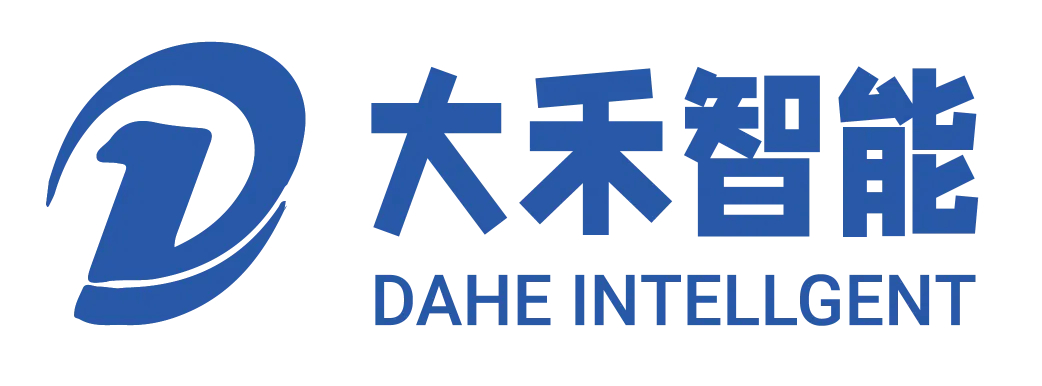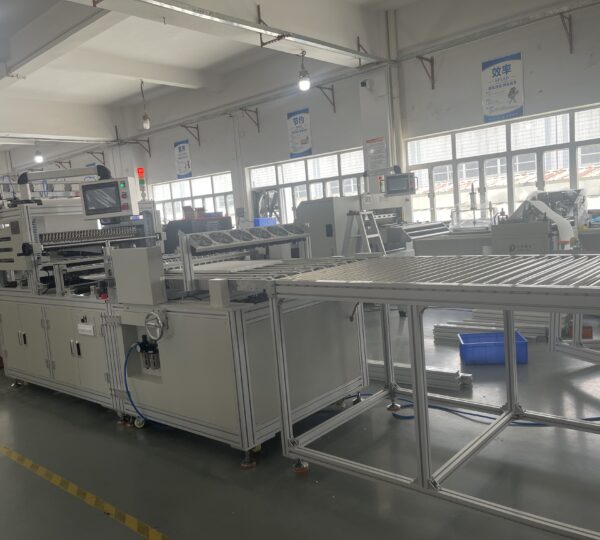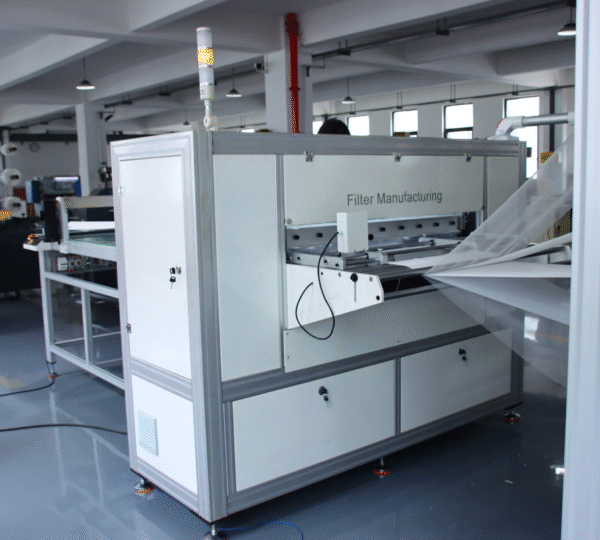An automatic glue injection production line for HEPA filter assembly requires millisecond-level coordination between glue dispensing and conveyor belt motion. Balancing glue flow and conveyor belt speed is critical because at high conveyor belt speeds, too much glue can lead to glue accumulation, squeeze-out, and material waste. At low conveyor belt speeds, insufficient glue can compromise seal integrity and cause leaks. Therefore, we need to know how to operate a high-precision filter glue application machine for pleated air filters to achieve consistent quality, minimize scrap, and maximize throughput without requiring constant operator intervention.
Balancing Glue Flow and Conveyor Belt Motion for filter glue application machine
Effective balancing starts with a deep understanding of adhesive rheology and conveyor belt dynamics. For example, polyurethane-based filter glue exhibits shear-thinning behavior, characterized by a sharp drop in viscosity as the injection pump speed increases, which alters the bead shape. Additionally, the acceleration phase of the conveyor belt and small speed fluctuations result in different residence times under the glue head, which affects the deposition amount.
You can perform rheological testing to map viscosity at shear rates ranging from 10 to 1000 s¹ and then feed that data into our flow control algorithms. At the same time, I analyze belt inertia, tension, and loading conditions, calibrating the servo-driven belt to maintain a constant line speed, even at varying filter densities. By combining materials science with precision mechanical adjustments, the filter glue application machine can consistently deposit an even bead of adhesive on each pleat, regardless of environmental changes or production loads.
Implementing Closed-Loop Glue Flow Control for Filter Glue Application Machines
The cornerstone of our filter glue application machine architecture is closed-loop glue flow control, which adjusts in real time to maintain precise output. We install a high-precision flow meter downstream of the glue pump to measure the actual flow. Additionally, the PLC can be programmed to adjust the pump speed based on real-time measurements, ensuring that the target flow for each pleat is achieved. At the same time, you can configure the system to sample flow at 100 Hz, compare the actual rate to the desired rate, and issue corrective commands within 10 milliseconds.
This fast feedback prevents drift caused by temperature changes, glue aging, or pump wear, and each glue dose is delivered within ±2% of the set value at belt speeds up to 1 m/s. The result is a rugged, high-precision glue injection line for pleated air filters that can operate continuously with minimal operator intervention, ensuring a consistent adhesive dosage at all times.
Synchronizing Conveyor Speed with Servo Drives at the Filter Glue Application Machine
Also crucial in our high-precision glue injection line for pleated air filters is precise control of conveyor speed. First, I selected brushless servo motors with 1,000 PPR encoders for each conveyor segment to achieve smooth motion. Then, I implemented motion profiles in the servo drives to smooth acceleration and deceleration, thereby eliminating jitter that can smear glue. At the same time, the servo loop can be adjusted to maintain speed within ±0.1% as the load changes, ensuring a consistent distance between the adhesive deposits and the filter frame. By synchronizing these servo-driven conveyors with the closed-loop control of the glue pump, the entire filter coater operates in perfect harmony, achieving a defect-free throughput of up to 300 filters per minute, even when running a 16-hour production shift.
Integrated recipe management for easy changeover
To simplify changeovers and maintain consistency, our filter coaters feature PLC-based recipe management. For example, operators can switch from a 6-inch HEPA filter to a 4-inch micro-pleat filter via the control interface. As a result, the PLC automatically adjusts the glue flow setpoint, belt speed, pump pressure, and dispenser timing. At the same time, the operator can program the touchscreen to store up to 100 different recipes, each validated to ensure the optimal glue-to-speed ratio and specific pleat geometry. This approach reduces changeover time to less than two minutes, ensuring that even inexperienced operators achieve the same high-quality output as experienced technicians. This process achieves higher uptime and lower scrap rates across all filter production lines.
Real-time monitoring and quality assurance
Maintaining the balance also requires tight real-time monitoring and integrated quality assurance. We deploy high-resolution vision sensors immediately downstream of filter glue application machines to verify the width, height, and position of the glue bead in real-time. Ultimately, any deviation beyond the ±0.5 mm tolerance triggers an automatic line stop, alarm, and detailed fault log. By combining these cameras with machine learning algorithms, it is possible to distinguish between acceptable glue application patterns and defects such as glue breakage, overspray, or fiber contamination. Combined with flow and speed logs, our filter glue applicators can generate comprehensive batch reports, enabling managers to identify the root cause of any quality issues and ensure compliance in critical applications, such as HEPA filter production.
Balancing Glue Flow and Conveyor Speed
Achieving the perfect balance between glue flow and conveyor speed on a filter glue application machine requires a holistic engineering approach, which involves implementing closed-loop flow control, synchronizing servo-driven conveyors, utilizing PLC recipe management, and performing real-time quality checks. Every system component we design—from high-precision flow meters to brushless servo drives and AI-enabled vision sensors—works together to ensure our automatic glue injection production line for HEPA filter assembly delivers consistent performance.





